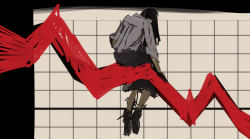When new students step foot onto campus, they are greeted by illustrious banners touting our Jesuit values. One of these is reverence for living and learning in a community steeped in diversity. As campus leaders, we have recognized that Georgetown has taken steps to create an inclusive Hilltop for everyone. However, we cannot deny that students from a diverse range of backgrounds still struggle to call Georgetown home.
Too often, conversations about diversity-concerning socioeconomic status, race, sexual orientation, gender, ability, and faith-evolve into empty promises and dead ends. The six of us wrote this article with the conviction that a problem for one Hoya is a problem for all Hoyas. We have found that Georgetown’s diversity problems are, in part, allyship problems.
So what is the first step to become an ally? Being an ally, or forming an “allyship,” starts by supporting a community of which you are not necessarily an established member. At first glance, allyship can appear to be just holding a set beliefs or knowing and loving certain people. In reality, sustainable and useful allyship is much more of an active process. It often requires struggle to place yourself in the shoes of others, to experience hardship with them, while simultaneously stepping back to let them tell their own stories and shape their own movements.
Our experiences as student leaders and advocates have taught us that most Georgetown students can be intimidated by conversations about diversity issues. Hoyas may question how their stories parallel, intersect, or overlap with the narratives of their peers; there are students who hesitate to engage difference for fear of being offensive or judged. Barriers emerge when students feel like they can’t relate to the issues or if they believe that their voices aren’t being heard. These two types of barriers reflect a level of discomfort that Hoyas are unwilling to embrace. Many Hoyas would rather not engage in these questions to avoid discomfort, or punt them to a separate and yet again self-selected body.
Conversations about diversity and issues affecting minority communities are facilitated throughout the school year. Passionate students come together to coordinate programs like Pluralism in Action and a Different Dialogue; these exceptional leaders head organizations like LEAD, the Patrick Healy Fellows, the Black House, among others. However, it’s important to look at who’s participating in these conversations. Most generally, the students that attend these very important events, the one’s who engage in the conversations, tend to be self-selected members of those oppressed communities. Why don’t we have more Georgetown students engaging in this dialogue?
The GUSA election this year has highlighted the problem of how Georgetown confronts its own community in diversity. Our institution should be aim at strengthening our appreciation of one another and our resolve to validate every Hoya. Our campaigns have advocated for a fundamental change in the ways we approach social problems and how we treat one another across our campus community. Although the What’s A Hoya program successfully engaged more than 500 students on relevant campus issues, addressing diversity on our campus requires empowering the very student groups that are most passionate about engaging this dialogue. However, we as students also must challenge ourselves more frequently and embrace moments of discomfort. By encouraging students to participate in the What’s A Hoya program, we can push Hoyas to take risks and attend programming that they normally would not. We can make every individual Hoya aware of their fellow Hoyas’ struggles, and in turn, involve all of us in finding and supporting the solutions.
Thomas Lloyd
Jimmy Ramirez
Nancy Hinojos
Zach Singer
Dan Silkman
Megan Murday




